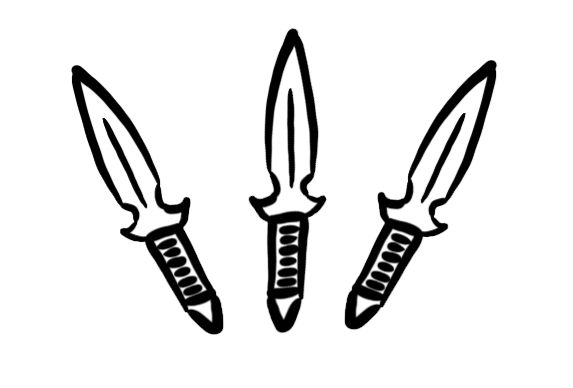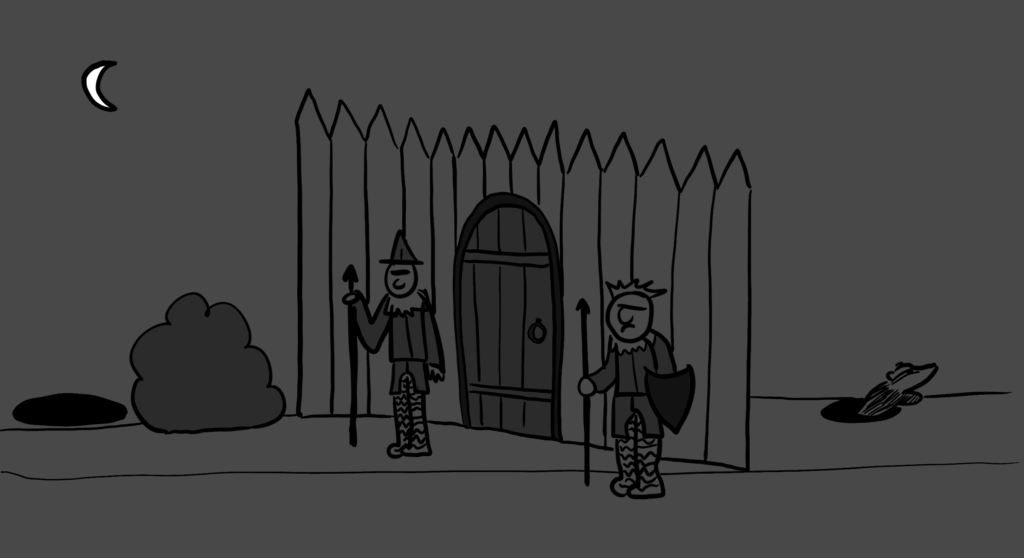The 3 Things That Appear in Every D&D Campaign
Now, I know that’s a very bold title to start off with. “Come on, aabicus,” I hear you saying, “There have been literally millions of D&D campaigns throughout history, with unfathomable amounts of premises and settings. How can you say for sure that anything has appeared in ALL of them?”
Well, this is how. For the rest of this slow-news-day article, I’m gonna lay my case for why these three things (one weapon, one monster, and one treasure) have never failed to appear in any D&D campaign ever played, from one-shots to dungeon crawls to the most unfathomable genres and storylines you can imagine.
Thing #1. The Dagger
Out of every weapon in D&D, none are more ubiquitous than the humble dagger. Despite its stats looking pretty unremarkable at first blush, there have always been reasons to carry one, and it was recently declared by D&D Beyond to be the most equipped weapon in 5e.
There are multiple reasons for this. Firstly, it’s equippable by every class, and the only finesse simple weapon in the game. Considering how many characters prioritize Dex over strength, it’s the logical emergency weapon for spellcasters. Then consider it’s also got the “Light” and “Thrown” properties, it’s just usable in so many different situations (including noncombat utility or concealment) that there’s plenty of reasons for anyone to throw one into their backpack just in case.
Historically it’s also the only weapon that’s always been usable by every class all the way back to the beginning. In the original 1st Edition Basic D&D, it was the only weapon Magic Users were allowed to wield. So no matter your party consistency, somebody can use it, and probably will.
Thing #2. The Guard.
Here’s one where I have to go against the grain. I’ve stumbled across numerous discussions regarding the most-used monsters in D&D, and the general consensus usually revolves around humans, goblins, kobolds, and orcs. But to really find the most-used monster of all time, I think we need to broaden our scope and consider the statblock that can be any race in the game.
Seriously, guards are involved in literally any storyline you can think of, even if they’re only there to dissuade your players from massacring the starter village. If your campaign has visited any settlement, be it friendly or hostile, it had guards. Whether you’re running a good or an evil campaign, sci-fi or fantasy, stealth or hack-n-slash, your players had to deal with guards. Even in a politics-driven social campaign with no combat, those upper-class parties full of aristocrats will have guards posted at the door. You can’t escape them!
(I could see an argument for commoner for all the same reasons, but I think guards barely edge them out due to wilderness campaigns or dungeon crawls without any preamble. Sometimes a storyline doesn’t have neutral civilians, but they’re probably still gonna have a sentry standing in a catacomb or escorting the king’s caravan holding a spear.)
My personal favorite guard is Lieutenant Thokk. Back in the day I was running a campaign where some guards appeared to help the party fight an air elemental that had just appeared in the center of town. It hit everybody around it with Whirlwind, dealing 11 damage, exactly enough to kill every single guard if I gave them average hitpoints. Not wanting that, I rolled individually to check their HP counts, and one of them rolled max 18! That guy turned out to be the only NPC survivor of the fight, even getting the final blow, the players loved it. Since then I’ve had Lt. Thokk appear as a particularly-chonky guard in different campaigns and settings, even upgrading his equipment and granting him a Sidekick level of Warrior, because at this point he’s earned it.
Thing #3. The Gold Piece.
There are countless treasures to plunder in Dungeons & Dragons, but it all begins with the basic gold piece. Every character starts with some, and the entirety of the in-game economy revolves around it so there’s really no escaping it. Of course, there’s a chance they’ve been reflavored to dollars or credits or bottlecaps depending on the campaign setting, but a gold piece by any other name is worth just as much.
Fun fact most people don’t know: The core rules say you can summon a gold piece using prestidigitation! I often see people claim it’s impossible because the spell description says, “a small trinket”, and they argue a coin is not a trinket. I could see their argument if we were going off the rules of English, however the Sailor background includes the optional flaw “I can’t help but pocket loose coins and other trinkets I come across.” Which means coins unequivocally count as trinkets in D&D. (Of course, the spell trinket will disappear after 12 seconds, so your options for abusing this are pretty low unless your setting has vending machines.)
Overall, none of these three things are particularly flashy in their ubiquity. In many ways they are among the most unglamorous inclusions in any campaign, which is probably a big part of why they’re so universal. They fit anywhere, filling simple but necessary roles in the players’ and GM’s toolkits, and that’s why I think they’re the three things you can find in any campaign of D&D.



